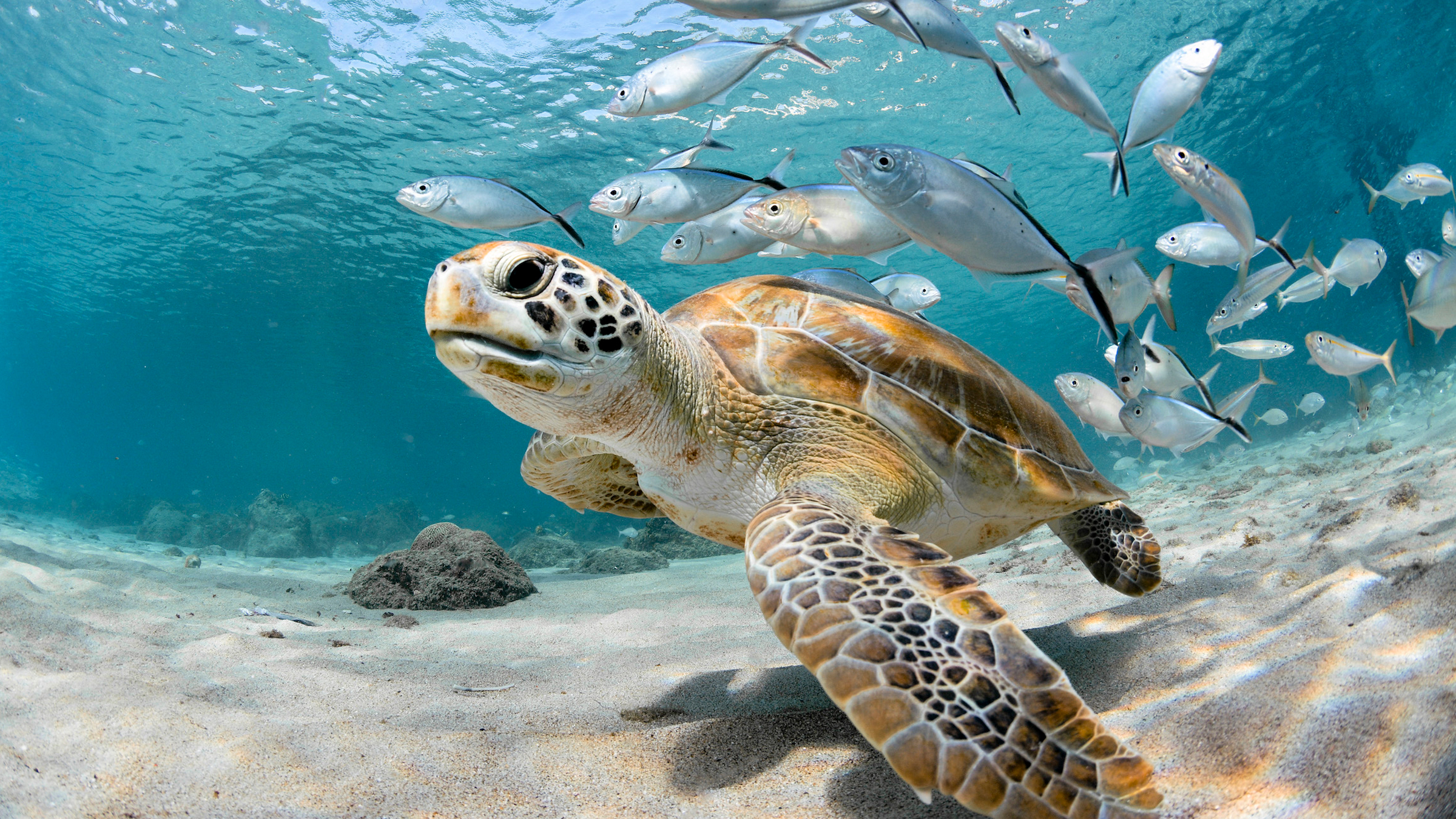
Can fish and other marine animals drown?
What if a shark stops swimming?

About 236,000 people drown every year, according to the World Health Organization. Humans aren't the only animals that drown, of course; dogs, snakes, birds and more can drown when they're caught in water with no way to escape. But what about fish and other marine animals? Can animals that live in the water also suffocate in it?
"Marine animals also need oxygen to live," said Frances Withrow, a marine scientist at Oceana, an environmental protection and conservation organization. "It's just that they live off of dissolved oxygen, while we get oxygen from the air."
Most fish breathe when water moves across their gills. But if the gills are damaged or water cannot move across them, the fish can suffocate. They don't technically drown, because they don't inhale the water, but they do die from a lack of oxygen.
Fishing equipment, such as some types of hooks, can damage the gills. Disease can also be the cause. Pathogens, mainly bacteria, may attach to the gills, blocking them so they can't filter oxygen from the water or degrading them to the point where they no longer work. "It's just like if we had a really bad respiratory disease," Withrow said. "It makes it [the animal] work harder to breathe."
Related: What's the biggest freshwater fish in the world?
Although some fish can pump water across their gills while at rest, many fish must swim constantly so that water flows past them. If they get trapped, such as in a fishing net, they may get stuck and suffocate, Withrow told Live Science.
Sharks need their fins to swim. Some fishers catch sharks and remove their fins for foods such as shark fin soup and then toss the shark back into the water because the rest of the animal may not be valuable on the market. "This is often an illegal activity because it's unsustainable," Withrow said. "Not only is it not great for the general populations of sharks, but it's pretty cruel." The shark can't swim when it's tossed back in, so it will be eaten by predators, die of starvation or suffocate.
Sign up for the Live Science daily newsletter now
Get the world’s most fascinating discoveries delivered straight to your inbox.
Other marine animals, such as turtles and dolphins, get air the way we do — they breathe it from the air. But they can only do it when they surface. Fishing equipment can trap them underwater, preventing them from doing so.
Drift gill nets, or giant nets that float in the water and are not designed to target a particular species of fish, are a major culprit. "Depending on the size of the net, it will catch anything that swims by," Withrow said. This includes fish, sea turtles and marine mammals that the fishers don't intend to sell. Other types of fishing equipment have ropes that can entangle animals, like whales, and prevent them from surfacing.
It's difficult to know how many marine animals suffocate, Withrow said, but entanglement kills 300,000 whales, dolphins and porpoises each year, the International Whaling Commission estimates.
Sometimes, areas of the ocean may not have enough dissolved oxygen to support the fish that live there. One way this can happen is if many plankton bloom simultaneously after sufficient nutrients become available. The plankton use up all the oxygen in a short period, causing fish in the area to suffocate. "The ocean is always mixing, but in strange ways," Withrow said. "So the water isn't always able to replenish that oxygen very quickly."
Moreover, warm water doesn't hold as much dissolved oxygen as cold water does, according to the U.S. Geological Survey. As ocean temperatures increase due to climate change, "dead zones" with lower oxygen levels are emerging, Live Science previously reported.
Originally published on Live Science.

Tyler Santora is a freelance science and health journalist based out of Colorado. They write for publications such as Scientific American, Nature Medicine, Medscape, Undark, Popular Science, Audubon magazine, and many more. Previously, Tyler was the health and science Editor for Fatherly. They graduated from Oberlin College with a bachelor's degree in biology and New York University with a master's in science journalism.









